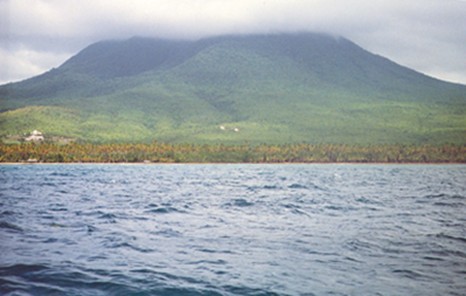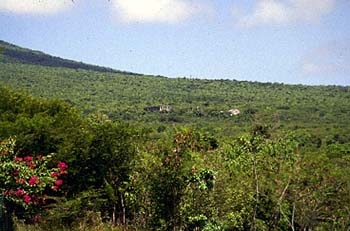On this site:
- Homepage
- The Mountravers Plantation Community, 1734 to 1834
The enslaved people
The employed men - Archival research
- Fieldwork:
Developments - Other work on Nevis:
Alexander Hamilton and 'Hamilton House'
Bath Hotel
British Library Endangered Archives
Bush Hill Estate
Clarke's Estate
Clifton Estate
Court House
Dasent's Estate
Early Steam Engines
Eden Browne Estate
Montpelier Estate
Scarborough's Estate
Stoney Grove Estate
Tower Hill Estate
Uprising, 1725: Frank's StoryWreck of HMS Solebay - Developments in Bristol
900 names
Servants in the family - Publications, reports and broadcast media
- Acknowledgments
- Contact details and links to other sites
On this site:
- Homepage
- The Mountravers Plantation Community, 1734 to 1834
The enslaved people
The employed men - Archival research
- Fieldwork:
Developments - Other work on Nevis:
Alexander Hamilton and 'Hamilton House'
Bath Hotel
British Library Endangered Archives
Bush Hill Estate
Clarke's Estate
Clifton Estate
Court House
Dasent's Estate
Early Steam Engines
Eden Browne Estate
Montpelier Estate
Scarborough's Estate
Stoney Grove Estate
Tower Hill Estate
Uprising, 1725: Frank's StoryWreck of HMS Solebay - Developments in Bristol
900 names
Servants in the family - Publications, reports and broadcast media
- Acknowledgments
- Contact details and links to other sites
Mountravers Plantation (Pinney's Estate)
Nevis, West Indies
Nevis, West Indies
Christine Eickelmann and David Small
Introduction
Mountravers, also known as 'Pinney's Estate', was a medium-sized sugar plantation on the Caribbean island of Nevis. It was made up of several estates and tracts of land. From the seventeenth century until slavery was abolished in 1834, more than 900 enslaved people are now known to have lived on Mountravers and its constituent parts. Successive members of the Pinney family owned the plantation, among them John Pretor Pinney, who settled in Bristol, England, in 1784. His family home in Bristol is now the city's Georgian House Museum.
From the sea, the ruins of the Mountravers Great House and
stable block are visible in the centre near the 'ghut'
that runs down the central mountain
(D Small and C Eickelmann, 1998)
Nevis was the premier landing point for enslaved Africans in the Leeward Islands between 1676 and 1700, and Bristol was the most important British slaving port in the 1730s. Links between Bristol and Nevis have been re-established through our involvement with both the Nevis Historical and Conservation Society and Bristol Museum and Art Gallery.
Our interest in the plantation was initially triggered by Professor Richard Pares's book A West India Fortune and by the absence in Bristol's Georgian House of any information about slavery as the major source of John Pinney's wealth.
The aims of our research
- to reconstruct the biographies of the enslaved people on Mountravers, as well as those of the managers and overseers
- to locate, identify and record the plantation structures
- to assist local organisations in recording and preserving the history of the island

View onto the ruins at Mountravers, on the slope
of Mount Nevis
On the left is the Great House; on the right the stable block
(D Small and C Eickelmann, 1998)
The importance of Mountravers Plantation
This research aims to enable people in Nevis and in Bristol to develop an understanding of their shared past by looking at an example which links them both. The plantation is of particular importance because
- its entire enslaved population has been the subject of a unique longitudinal study which also includes the white plantation employees, see The Mountravers Plantation Community, 1734-1834
- the treatment of some of its workers became a cause celebre in 1810 after a notorious flogging which fuelled the debate about the abolition of slavery
- the plantation is one of only a few in the British Leeward Islands where archaeological work has taken place at a slave village site
- Professor Richard Pares's economic history of Pinney's sugar business A West India Fortune (London, 1950) is still regarded by academics in the field as a landmark publication
- Channel 4's Time Team two-part archaeology programme (1998/9) about the plantation has focussed public attention on Mountravers.
In recent years various property companies have attempted to develop large parts of the land as a leisure resort - often without knowledge of the history of the estate and sometimes without any plan to mitigate the impact of development on culturally sensitive areas of the site. A more careful proposal by Newfound NV fell through in the property crash of 2008. After further failures and speculative manouvres it is clear that, for any future development to be carried out, the developers should be scrutinised carefully and subject to the normal tests of 'due diligence'.